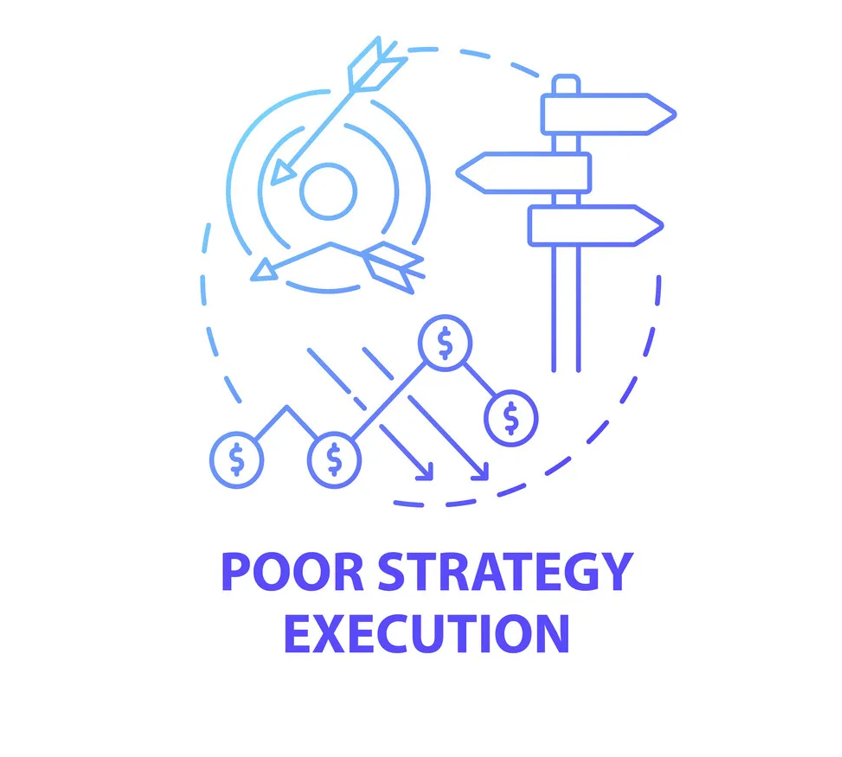If you are not progressing as you should, the issue is not strategy. It is your execution discipline. In my experience, many leaders know where they want to be (vision/ambition/goals); and where they are now (current performance). The challenge is how to close the gap (how to get there). As Mr Strategy, that is the gap I come to help bridge work with your team and bring fresh air to the discussion to agree on the set of priority interventions to get there. Imagine a rowing team where every crew member is strong, disciplined, and eager to win. The problem? Half are rowing backward, a few are paddling sideways, and one or two are busy yelling about how hard they’re working instead of rowing at all.
That’s your organization when priorities are misaligned. Everyone is busy, no one is coordinated, and the boat (B) is not going anywhere. Worse, it is probably sinking under the weight of too much effort spent in the wrong direction.
I once worked with a financial institution that had a bold five-year strategy: grow market share, dominate digital banking, and deliver unparalleled customer service. Sounds impressive, right? Except their marketing team was putting millions into TV ads while their IT department was stuck with outdated systems that crashed every time a customer tried to log in. Their call centers were overwhelmed because shockingly when people couldn’t bank online, they called for help.
They were rowing hard. Just not together.
Here is the brutal truth: strategy execution doesn’t fail because people are lazy or incompetent. It fails because leaders forget their job isn’t to give inspiring speeches or write pretty plans. Your job is to create alignment. How does the individual staff role fit into the strategy? What is the implication of my failure to show up? Without it, your strategy is dead on arrival.
Simon Sinek might call this the “why versus what” problem. Everyone knows the what the tasks, the initiatives, the endless meetings. But if the why is not clear and unified, those tasks become random acts of effort.
You need ruthless alignment!
Alignment is not a “soft” skill. It is the hardest work a leader will ever do. It requires ripping apart silos, confronting sacred cows, and sometimes admitting you, the leader, is the problem.
- Start by creating a single priority. Not five. Not three. One. A client in retail once told me their priority was “growth.” When I asked which kind of market share, profit margin, and geographic footprint they said, “All of it.” No wonder their teams were confused. Narrow the target.
- Measure alignment, not activity. Stop asking teams for updates on how hard they are working. Start asking how their actions directly support the one priority. If it does not, it is wasted energy. You need a Chief Alignment Officer (CAO); to identify such wasted energy instead of the officers who come after mistakes are committed!
- Confront conflict early. When rowing teams are offbeat, they stop, reset, and align. If your teams are out of sync, do not wait for the quarterly review to discover the mess. Fix it in real time. In this VUCA volatile, uncertain, complex, and ambiguous world, the more agile you are the more you will win.
A lesson from the frontline
A healthcare organization I worked with turned this around beautifully. During the strategy retreat, we agreed to narrow our focus. They set a singular goal: improve patient outcomes. Every department was required to show exactly how their work contributed to this goal. IT upgraded scheduling systems to reduce delays. Marketing stopped running glossy ads and focused on educating patients. Even HR shifted hiring criteria to prioritize empathy over credentials.
In two years, patient satisfaction soared, and the organization’s revenue followed. Alignment wasn’t a soft fix it was their competitive edge. That is why I say, execution is the strategy.
My take
Misaligned priorities are silent killers. They do not make headlines, but they quietly destroy progress, morale, and profits. If your teams are rowing in different directions (B), it’s not their fault. It’s yours. Leadership isn’t about steering the ship it’s about ensuring everyone rows in the same direction. Fix the alignment, and the results will follow.
Now, stop writing strategy documents no one reads and start aligning your teams like your success depends on it because it does.
Until next time, Mr. Strategy.









